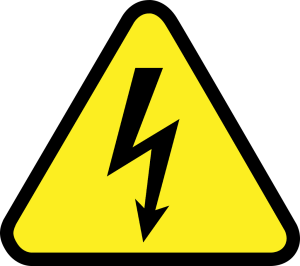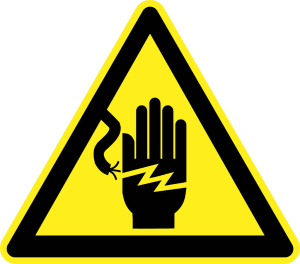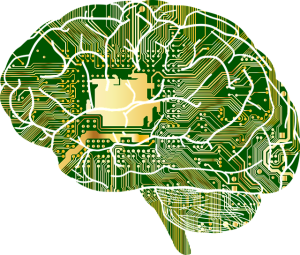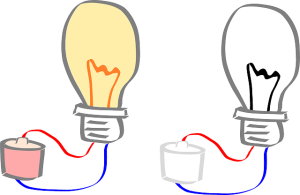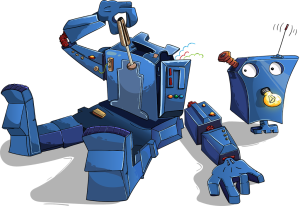Electricity
Introduction
Electricity is now everywhere in our lives. Electricity, lights our homes, cooks our food, powers our systems, stabilize managements, in vehicles and other electronic devices.
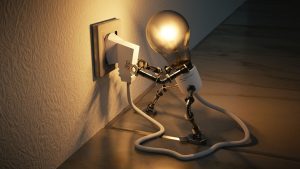
Atoms, which are made up of three smaller particles i.e., proton, neutron and electron. Electrons spin around the center, or nucleus. The nucleus is made up of neutrons and protons. Electrons contain a negative charge, protons a positive charge. Neutrons are neutral, they have neither positive nor negative charge.
Each atom has a specific number of electrons, protons and neutrons. But it does not matter how many particles an atom has; number of electrons usually needs to be the same as number of protons. If the numbers are same, then the atom is called balanced and stable.
So, if an atom had six protons, it should also have six electrons. The element with six protons and six electrons is called carbon. Carbon is found in abundance in the sun, stars, comets, atmospheres of most planets, and the food we eat. Coal is made of carbon; so are diamonds. Some kinds of atoms have loosely attached electrons. An atom that loses electrons has more protons than electrons and is positively charged. An atom that gains electrons has more negative particles and is negatively charged. A “charged” atom is called an “ion”.
Electrons are made to move from one atom to another. When those electrons move between the atoms, a current of electricity is created. The electrons move from one atom to another in a “flow.” One electron is attached, and another electron is lost. Since all atoms want to be balanced, the atom that has been “unbalanced” will look for a free electron to fill the place of the missing one. This unbalanced atom has a “positive charge” because it has too many protons. Since it got kicked off, the free electron moves around waiting for an unbalanced atom to give it a home. The free electron charge is negative, and has no proton to balance it out, so we say that it has a “negative charge”.
“Electricity is conducted through some materials better than others. Its resistance measures how, well something conducts electricity. Some things hold their electrons very tightly. Electrons do not move through them. These things are called insulators. Rubber, plastic, cloth, glass and dry air are good insulators and have very high resistance.”
Where does the word ‘electricity’ come from?
Electrons, electricity, electronic and other words that begin with “electr…” all originate from the Greek word “elektor,” meaning “beaming sun”. In Greek, “elektron” is the word for amber.
Amber is a very goldish brown “stone” that sparkles orange and yellow in sunlight. Amber is like a fossilized tree sap!
Ancient Greeks discovered that amber behaved oddly, like attracting feathers when rubbed by fur or other objects. They didn’t know what it was that caused this phenomenon. But the Greeks had discovered one of the first examples of static electricity. The Latin word, electricus, means to “produce from amber by friction.” The English word electricity is from Greek and Latin words that were about amber.
Ser | mA | Effect on Person |
1. | 0.5– 3 | Tingling sensations. |
2. | 3– 10 | Muscle contractions and pain. |
3. | 10– 40 | “Let-go” threshold. |
4. | 30– 75 | Respiratory paralysis. |
5. | 100– 200 | Ventricular fibrillation. |
6. | 200– 500 | Heart clamps tight. |
7. | 1500+ | Tissue and Organs start to burn. |
Electrical burns can be very serious. These burns may be of three basic types:
(i) electrical burns,
(ii) arc burns and
(iii) thermal contact burns.
Electrical burns are the result of the electric current flowing in the tissues and may be either in deep skin or may affect deeper layers (such as
muscles and bones) or both. Tissue damage is caused by the heat generated from the current flow; if the energy delivered by the high electric shock, the body cannot disperse the heat, and the tissue is burned. Typically, such electrical burns are slow to heal.
Arc burns are the result of high temperatures produced by electric arcs or by explosions close to the body.
Thermal contact burns are those normally experienced from the skin contacting hot surfaces of overheated electric conductors, conduits, or other energized equipment. In some circumstances, all three types of burns may be produced simultaneously.
Nature of Electrical Accidents
Electrical accidents, when initially studied, often appear to be caused by circumstances that are varied and peculiar to the incidents involved. However, further consideration usually reveals the underlying cause to be a combination of three possible factors:
(i) work involving unsafe equipment and installations,
(ii) workplaces made unsafe by the environment and
(iii) compromising safe work practices.
The first two factors are sometimes considered together and simply referred to as horseplay or unsafe conditions. Thus, electrical accidents can be generally considered as being caused by unsafe conditions, unsafe work performance or, in what is usually the case, combinations of the two. It should also be noted that inadequate maintenance can cause equipment or installations that were originally considered safe to deteriorate, resulting in an unsafe condition.
Some unsafe electric equipment and installations can be identified, for example, by the presence of faulty insulation, improper grounding / earthing, loose connections, defective parts, ground faults in equipment, unguarded live parts, and underrated equipment.
The environment can also be a contributory factor to electrical accidents in several ways. Environments containing flammable vapors, liquids, or gases; areas containing corrosive atmospheres and wet and damp locations are some unsafe environments affecting electrical safety. Finally, unsafe acts include the failure to de-energize electric equipment when it is being repaired or inspected or the use of tools or equipment too close to energized parts (Control of Hazardous Energy – Lockout/Tagout).
Circuits
Electrons with negative charge, cannot “jump” through the air to a positively charged atom. They have to wait until there is a link or bridge between the negative area and the positive area. We usually call this bridge a “circuit”.
When a bridge is created, the electrons begin moving quickly. Depending on the resistance of the material making up the bridge, they try to get across as fast as they can. If you’re not careful, too many electrons can go across at one time and destroy the “bridge” or the circuit, in the process.
We can limit the number of electrons crossing over the “circuit,” by letting only a certain number through at a time. And we can make electricity do something for us while they are on their way. For example, we can “make” the electrons “heat” a filament in a bulb, causing it to glow and give off light.
When we limit the number of electrons that can cross over our circuit, we say we are giving it “resistance”. We “resist” letting all the electrons through. This works something like a tollbooth on a freeway bridge. Copper wire is just one type of bridge we use in circuits.
Before electrons can move far, however, they can collide with one of the atoms along the way. This slows them down or even reverses their direction. As a result, they lose energy to the atoms. This energy appears as heat, and the scattering is a resistance to the current.
Think of the bridge as a garden hose. The current of electricity is the water flowing in the hose and the water pressure is the voltage of a circuit. The diameter of the hose is the determining factor for the resistance.
Current refers to the movement of charges. In an electrical circuit – electrons move from the negative pole to the positive. If you connected the positive pole of an electrical source to the negative pole, you create a circuit. This charge changes into electrical energy when the poles are connected in a circuit, like connecting the two poles on opposite ends of a battery. Along the circuit you can have a light bulb and an on-off switch. The light bulb changes the electrical energy into light and heat energy.
The number of electrons we are willing to let across the circuit at one time is called “current“. We measure current using amperes, or “Amps”. One AMP is defined as 625,000,000,000,000,000,000 (6.25 x 1018) electrons moving across your circuit every second!
Since no one wants to remember such a big number, that big number is called a “coulomb,” after the scientist Charles A Coulomb who helped discover what a current of electricity is.
The amount of charge between the sides of the circuit is called “voltage.” We measure Voltage in Volts. The word volt is named after another scientist, Alexader Volta, who built the world’s first battery.
Voltage, Current and Resistance are very important to circuits. If either voltage or current is too big you could break the circuit. But if either is too small, the circuit will not be able to work enough to be useful to us. In the same way, if the resistance is too big none of the electrons would be able to get though at all, but if it were too small, they would rush though all at once breaking the circuit on their way.
Qualified Person is:
- Trained and knowledgeable in construction and operation of equipment or specific work method.
- Able to recognize and ensure electrical safety.
- May be qualified w.r.t, certain equipment, and methods but unqualified for others.
For a “Qualified Person” to work within the Limited Approach Boundary they must be trained to:
1. Distinguish exposed energized parts from others.
2. Determine nominal voltage.
3. Determine approach distances.
4. Determine degree and extent of concerned occupational hazard and PPE required.



